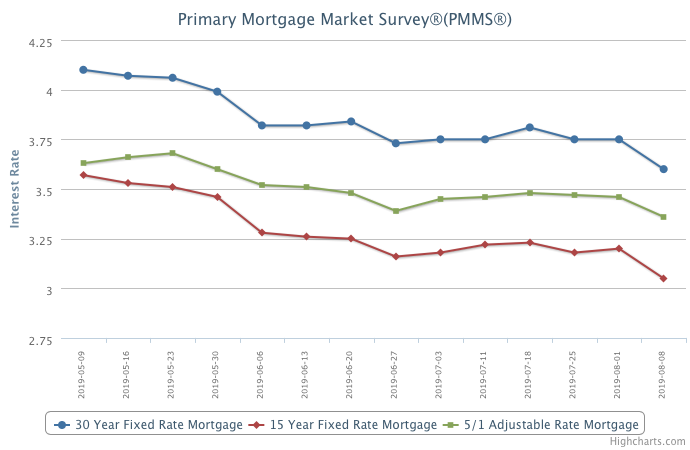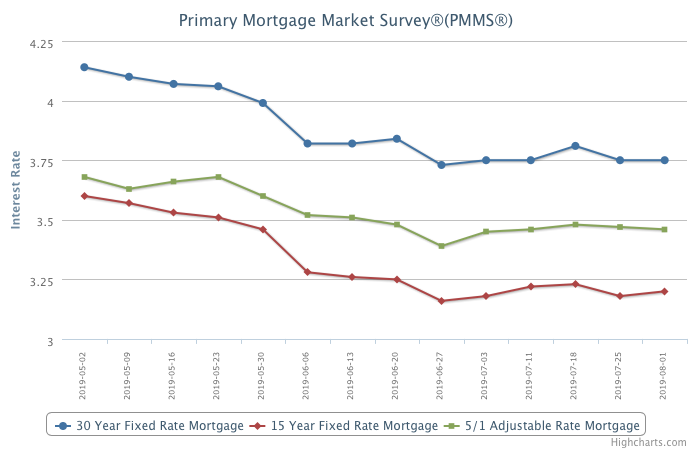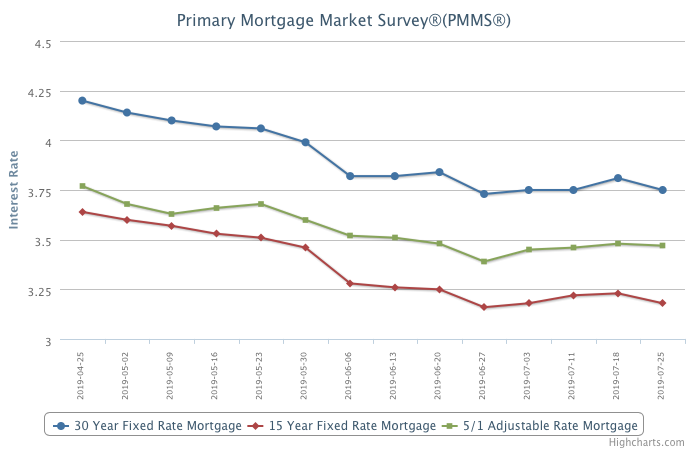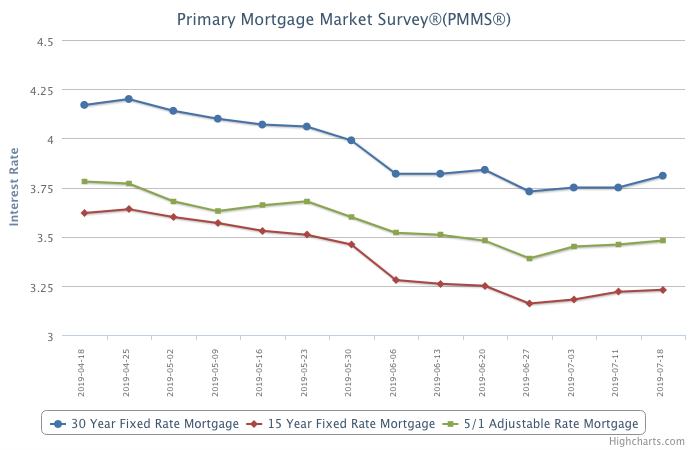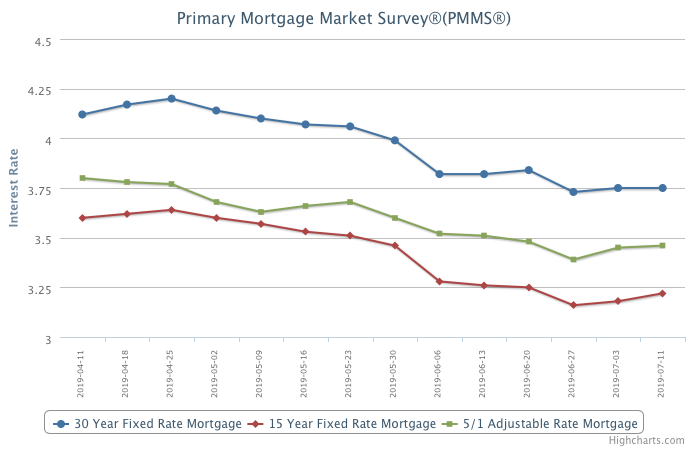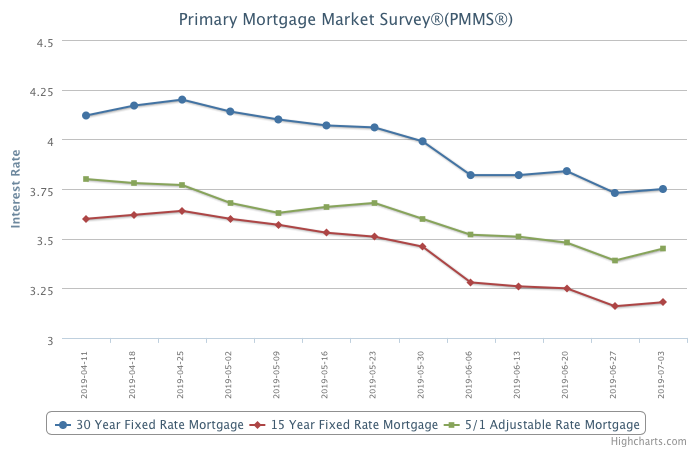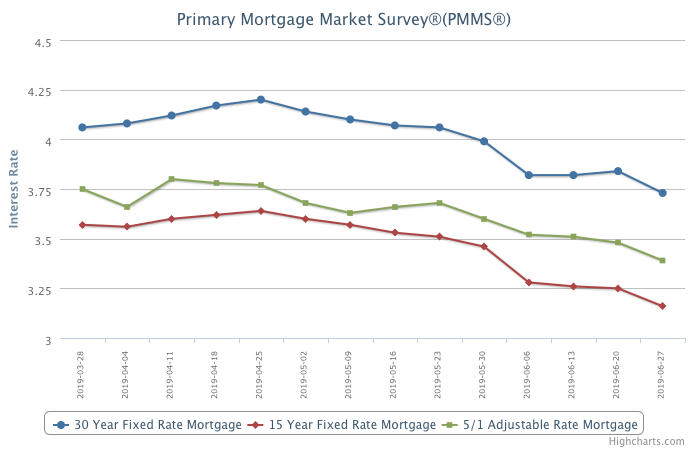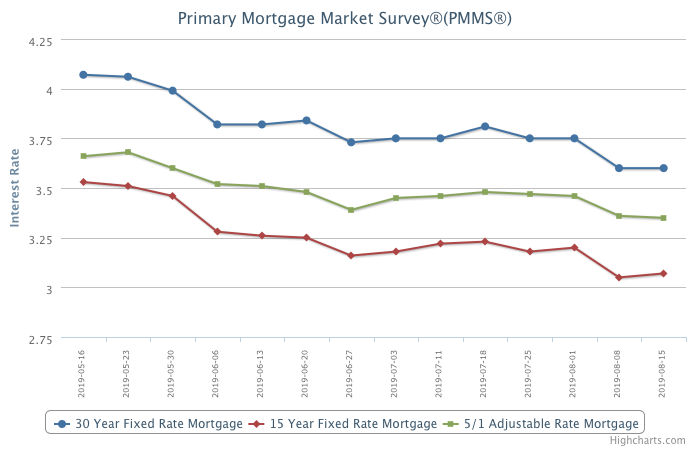
August 15, 2019
The sound and fury of the financial markets continue to warn of an impending recession, however, the silver lining is mortgage demand reached a three-year high this week. The decline in mortgage rates over the last month is causing a spike in refinancing activity – as homeowners currently have $2 trillion in conventional mortgage loans that are in the money – which will help support consumer balance sheets and increase household cash flow. On top of that, purchase demand is up seven percent from a year ago.
Information provided by Freddie Mac.

